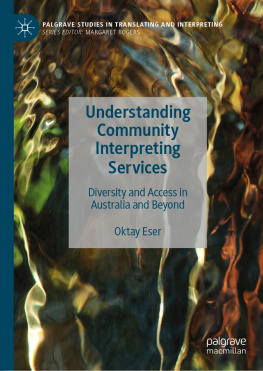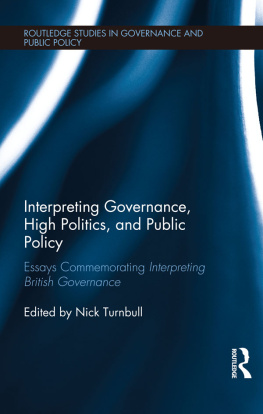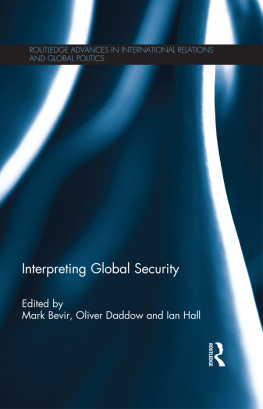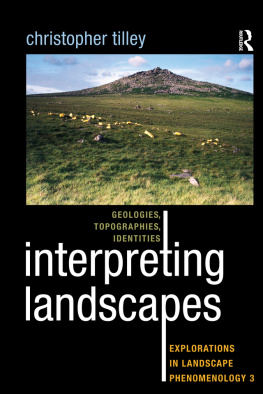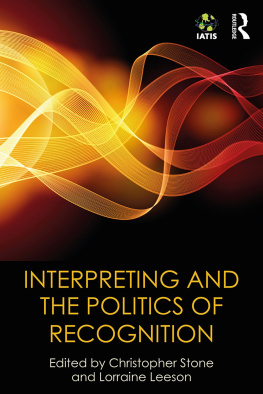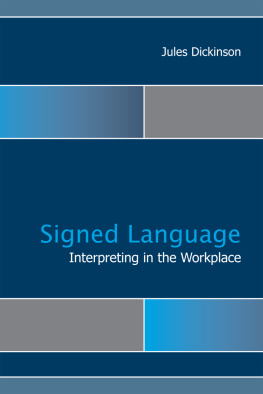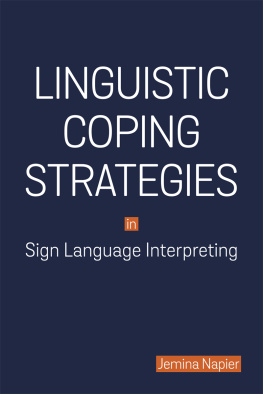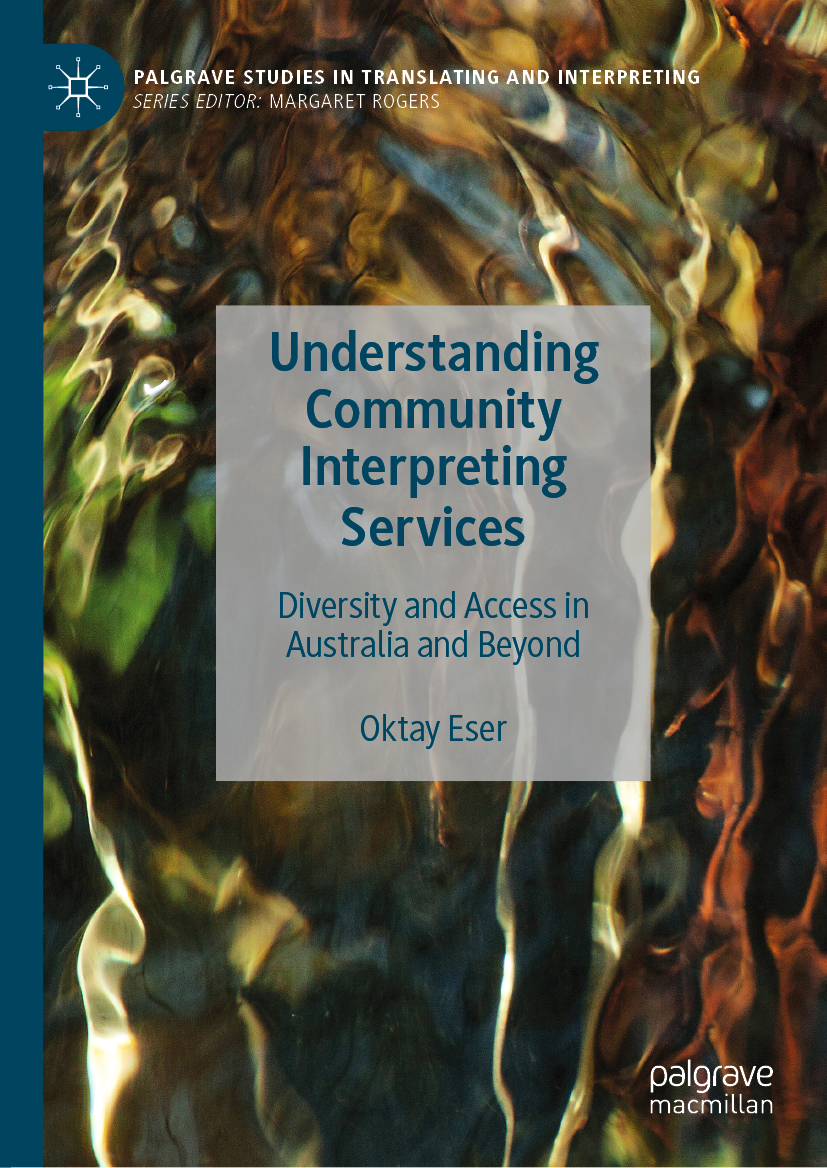Palgrave Studies in Translating and Interpreting
Series Editor
Margaret Rogers
School of Literature and Languages, University of Surrey, Guildford, UK
This series examines the crucial role which translation and interpreting in their myriad forms play at all levels of communication in today's world, from the local to the global. Whilst this role is being increasingly recognised in some quarters (for example, through European Union legislation), in others it remains controversial for economic, political and social reasons. The rapidly changing landscape of translation and interpreting practice is accompanied by equally challenging developments in their academic study, often in an interdisciplinary framework and increasingly reflecting commonalities between what were once considered to be separate disciplines. The books in this series address specific issues in both translation and interpreting with the aim not only of charting but also of shaping the discipline with respect to contemporary practice and research.
More information about this series at http://www.palgrave.com/gp/series/14574
Oktay Eser
Understanding Community Interpreting Services
Diversity and Access in Australia and Beyond
1st ed. 2020

Logo of the publisher
Oktay Eser
Department of Translation and Interpreting, Amasya University, Amasya, Turkey
Palgrave Studies in Translating and Interpreting
ISBN 978-3-030-55860-4 e-ISBN 978-3-030-55861-1
https://doi.org/10.1007/978-3-030-55861-1
The Editor(s) (if applicable) and The Author(s) 2020
This work is subject to copyright. All rights are solely and exclusively licensed by the Publisher, whether the whole or part of the material is concerned, specifically the rights of translation, reprinting, reuse of illustrations, recitation, broadcasting, reproduction on microfilms or in any other physical way, and transmission or information storage and retrieval, electronic adaptation, computer software, or by similar or dissimilar methodology now known or hereafter developed.
The use of general descriptive names, registered names, trademarks, service marks, etc. in this publication does not imply, even in the absence of a specific statement, that such names are exempt from the relevant protective laws and regulations and therefore free for general use.
The publisher, the authors and the editors are safe to assume that the advice and information in this book are believed to be true and accurate at the date of publication. Neither the publisher nor the authors or the editors give a warranty, expressed or implied, with respect to the material contained herein or for any errors or omissions that may have been made. The publisher remains neutral with regard to jurisdictional claims in published maps and institutional affiliations.
Cover illustration: Getty Images/Ron Evans
This Palgrave Macmillan imprint is published by the registered company Springer Nature Switzerland AG
The registered company address is: Gewerbestrasse 11, 6330 Cham, Switzerland
Dedicated to Dr. Sedat Mulayim
(1965-2016)
Discipline Head,
Department of Translating and Interpreting,
RMIT University, Victoria, Australia
Foreword
This book, Understanding Community Interpreting Services: Diversity and Access in Australia and Beyond by Oktay Eser, Department of Translation and Interpreting, Amasya University, Turkey, is a welcome addition to the field.
The author conducted his post-doctoral research on Community Interpreting (CI) at RMIT University in Melbourne, under the supervision of and in collaboration with Dr. Miranda Lai of that University. It was the late Dr. Sedat Mulayim who had initially alerted the author to the field of Community Interpreting, and this book is dedicated to Dr. Mulayim.
Australia was one of the first countries to establish credentialing for interpreters and translators at various levels by establishing the National Accreditation Authority for Translators and Interpreters in 1977 (Hlavac 2016, p. 61). In 2012 Professor Sandra Hale and colleagues presented the report of an investigation they had conducted at the request of NAATI (Hale et al. 2012). The report recommended that NAATI testing only be available to candidates who had undertaken training
From 2018 onwards, NAATI accreditation is only valid for three years. All certified translators and interpreters must keep a log of assignments undertaken as evidence that they are maintaining their skills.
The author describes the situation in Australia from what I refer to as an outsider-insider perspective. He is enough of an outsider to be able to have a broad perspective on Community Interpreting services in Australia. This outsider gaze is helped by the fact that he looks at Community Interpreting from two different perspectives: interpreting studies and management studies. The outsider perspective is also helped by the fact that he looks at the situation in Australia as a whole, and the state of Victoria in particular as a visiting scholar. Eser received support from scholars at RMIT University in Melbourne which allowed him to connect with important stakeholders, such as the CEO of NAATI, Mark Painting, Niki Baras, Organiser of the Translators and Interpreters branch of Professionals Australia, Frans Moens, Head of strategic projects with Victorian Interpreting and Translating Services (VITS) LanguageLoop and many others.
At the same time, his status as an insider/scholar in the area of interpreting studies allows him to ask the right questions of the stakeholders he interviews. This insider status also allows him to ask the right questions of policy and other documents he consults and facilitates his ability to work with the NVivo qualitative analysis tool. After all, it is only an insider who could make sense of the nodes or recurrent themes, while it requires both an insider and an outsider gaze to make sense of these nodes, by looking at them with the broad yet insightful gaze required.
Eser uses the management services lens to discuss supply and demand, quality of services, casualization and so on. At the same time, the author is able to zoom in on important details, facilitated by interviews with stakeholders
Community Interpreting has also been referred to as Liaison Interpreting (Gentile, Ozolins and Vasilakakos 1996) and is often referred to as Public Service Interpreting (PSI) (e.g. Enriquez Raido, Crezee and Ridgeway 2020). The author refers to seminal work on Community Interpreting by impactful scholars such as Hale (2007) and Corsellis (2008). Personally, I quite like the term Community Interpreting because of the connection this creates with the concept of community translation, as defined by Taibi and Ozolins (2016): like community translation, community interpreting facilitates community access to important public service information. It also provides members of migrant and refugee communities with a voice.

